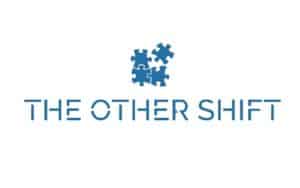Disclosure: This page may contain affiliate links, meaning we receive a commission if you decide to make a purchase through our links, but this is at no additional cost to you. Please read our disclosure and privacy statement for more info.
In today’s world, working night shifts is a common way of running a business as companies try to be of service twenty-four hours, seven days a week. And for the most part, it can work really well for business operations! However, with constant shifts and consequently a lack of sleep, problems start to arise. 70% of U.S adults report insufficient sleep at least one night a month and at the same time, 11% have inadequate sleep every night. (source) Employees can start developing debilitating sleep disorders, for which sleep apnea can be very dangerous if left unchecked.
In isolation, night shift work won’t cause sleep apnea. Chronic breathing issues may arise when sleep deprived, as there is greater pressure on the heart and lungs. However, night workers with existing sleep apnea may experience worsening symptoms such as; frequent breathing pauses and lower oxygen saturation levels during sleep.
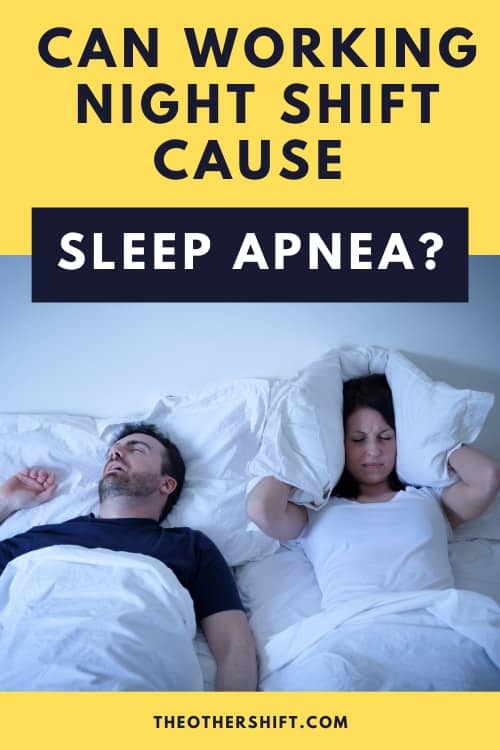
As we’ve talked about many times here, our bodies have an inbuilt timer that associates light with activity or work and darkness with sleep. People, like us, who work night shifts tend to go against this finely inbuilt clock or circadian rhythm, with our body and brains going a little stir crazy as a result, as it constantly tries to realign itself.
This constant re-jig process can make sleeping very difficult for us, which I’m sure I don’t need to tell you twice! So, stick with me as we explore all things sleep apnea and its link with night shift. Are you at a higher risk? If so what can we do about it?
What Is Sleep Apnea?
As a quick introduction – sleep apnea is a sleeping disorder where breathing stops and starts repeatedly—most people with sleep apnea snore when sleeping and never get restful sleep.
During the day, you experience fatigue even though you’ve had a whole night’s sleep. Sounding familiar?
Here is a brief description of what happens when we breath – in those shift workers without sleep apnea.
Typically when breathing, air goes down our throats to the windpipe, then the lungs. When we are wide awake, all the muscles in our throats are wide open, even the narrowest of them. But when sleeping, these muscles relax. Sometimes the air passing through the throat forces itself in and causes vibration, which brings about snoring.
In some other people though, the narrow path at the back of the throat closes completely, and the lungs get no air. Mostly this happens because the brain fails to send a message to the throat muscles to open up. As a result, the brain quickly activates the muscles by waking you up and letting air into the lungs.
Most times, the wake happens in a way that we don’t even notice it. Afterward, the brain goes back to sleep, and this happens again over and over. Due to the disturbed sleep, you won’t get into that deep sleep that brings about rest.
Types of Sleep Apnea
There are common main varieties of sleep apnea:
- Central sleep apnea is when the brain doesn’t send the right signals to the muscles controlling breathing leading to throat closure.
- Obstructive sleep apnea takes place when throat muscles relax, leading to snoring. It is the most common type of this sleeping disorder.
- Complex sleep apnea syndrome is when you have both of the above types of sleep apnea.
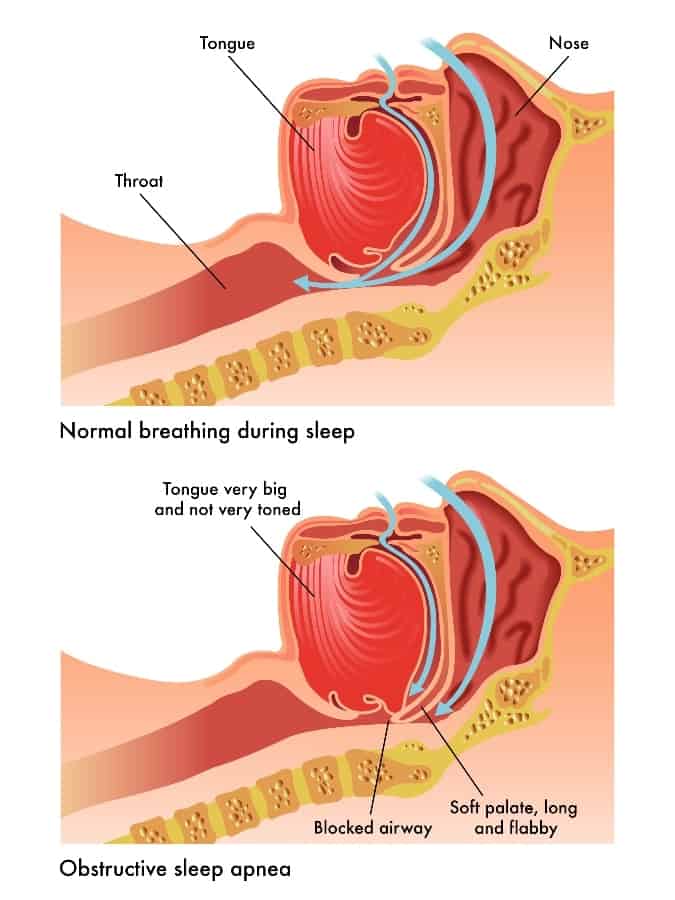
Symptoms Of Sleep Apnea
- There is a reduced or absence of breathing. Also known as apnea events. Mostly this is noticed by your partner.
- You battle with feelings of sleepiness and fatigue throughout the day.
- There is the presence of headaches or dry mouth upon waking.
- Frequent waking at night to urinate
- There is a decrease in motor skills, concentration and an increase in memory loss.
- You frequently find yourself gasping for air when sleeping.
- Loud and frequent snoring (here is a simple sleep solution for your snoring!).
Apnea in men, women and children varies. Most of the above symptoms occur in men. In women, the most common symptoms are;
- Depression
- Anxiety
- Headache
- Insomnia
- Sleep disruption
- Fatigue
In children, the most common symptoms are;
- Bedwetting
- Hyperactivity
- Increase in asthma symptoms
- Academic performance and learning problems
Most people tend to get their diagnosis of sleep apnea late. Regardless, the sleeping disorder is treatable and some patients end up being completely free of the disease.
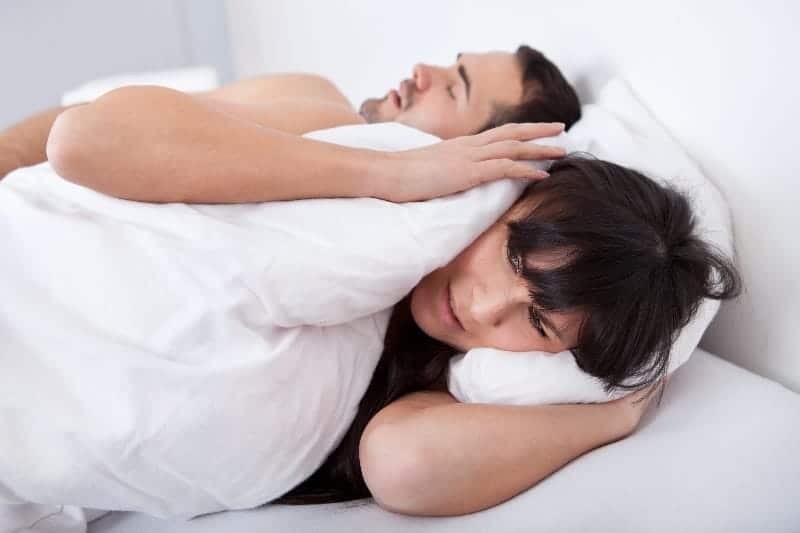
VitalSleep is a custom fitted mouthpiece that holds your lower jaw forward to keep your airway clear.
Check out the VitalSleep Reviews here and see if it’s right for you (or your partner!)
Sleep Apnea Risk Factors
Sleep apnea can affect any person irrespective of age and gender. The risk factors include;
| Risk Factor | Reason |
|---|---|
| Excessive weight | When you have fat deposits around your neck, it increases pressure and weight on your throat, leading to its closure. |
| Cigarettes | According to studies, smoking is primarily associated with sleep apnea. Nicotine alters sleep quality as it causes brain arousal when the brain is supposed to be resting. Also, smoking leads to inflammation in the upper airway. |
| Body structure | If you have a thick neck, most likely than not, you have a narrow airway. A narrow airway can easily get blocked by tonsils or adenoids, leading to apnea. |
| Alcohol usage | Alcohol and other tranquilizers cause muscles to relax, worsening sleep apnea. Do you enjoy a drink after night shift? This post will be an interesting read for you. |
| Nasal congestion | People who have difficulty breathing every day are more likely to suffer from sleep apnea. |
| Male | The male gender is more likely to develop apnea compared to females potentially due to the structure of the male jaw. (source) |
| Age | The older you are, the more likely you are to have this condition. |
| Family history | According to Healthline, “Research suggests that obstructive sleep apnea is about 40 percent attributable to genetics, which means it can be hereditary”. attributable to genetics, which means it can be hereditary”. |
| Pre-existing conditions | Parkinson’s, Type 2 Diabetes, high blood pressure, contribute to the probability of developing sleep apnea. (source) |
Why Night Shift Workers Are at Risk of Obstructive Sleep Apnea (OSA)
Our night shift body clocks are so confused! We are biologically programmed to sleep during the night and be alert during the day. However we know as night shift workers and we do the complete opposite!
This misalignment between our sleep wake cycles and our circadian rhythms causes a lot of stress on our hearts, actually our entire cardiovascular system for that matter. This leads to problems with not only with heart function but also our breathing, unfortunately putting as at a much higher risk of being diagnosed with OSA. (source)
Irregular circadian function is also known to worsen inflammatory disorders, spike blood sugar levels and slow your metabolism, which is certainly not doing any good for our already stressed out heart. (source)
….shift workers had more frequent breathing pauses and lower oxygen saturation levels during sleep than the daytime workers, indicating that people with sleep apnea who work shifts may experience more severe symptoms than people who work regular hours.
Sleep Medicine
This study by the Journal of the American Heart Association went on to explain that; recurrent circadian disruption induced by overnight shift work may be detrimental to cardiovascular health outcomes in this older population of post‐Acute coronary syndrome (ACS) patients independent of traditional risk factors.
Does Night Shift Work Make Sleep Apnea Worse?
From the minimal research done in this specific area it seems like there is a strong connection between night work and the worsening of OSA symptoms.
In the Journal of physiology and pharmacology, they explain that night shift work significantly increased several suboptimal breathing changes such the total amount and length of duration of obstructive apneas during Rapid Eye Movement (REM) sleep.
In this particular study, “they conclude that in a subpopulation of sleep apnea patients, acute sleep deprivation may worsen obstructive sleep apnea index”.
Basically, if you work nights and you have OSA, it may get worse due to your potential lack of sleep and disruption to your routine loving body block.
Night Shift Risk Factors For OSA
We explored the general risk factors for OSA above such as being overweight, excessive alcohol and cigarette consumption and also pre-existing medical conditions like type 2 diabetes. Now it’s time to understand why night shift workers are particularly at risk…outside of sleep deprivation.
- Your body doesn’t get enough vitamin D
Vitamin D is necessary as it helps with calcium absorption, furthering strong bones’ growth. Less vitamin D results in other diseases like; heart disease, breast cancer, colon cancer, depression and prostate cancer.
- Hormonal Imbalance:
Working night shift can also messes up with one’s hormones, increasing your risks of having obesity or diabetes. Hormonal imbalance and reproduction in the body can increase the chances of developing these conditions even when living a healthy lifestyle.
- Increased risks of breast cancer in women
Exposure to light at night reduces melanin production, which increases the production of estrogen in women. According to a study, exposure to light at night increases breast cancer chances later on. Women who worked more hours and years at night in graveyards had higher chances of developing breast cancer.
- Increased risk of depression
According to a study, the risk of depression increases with more night-shift work. We recently published an article about night shift and depression. If you’re struggling, this post will hopefully help lead you in the right direction in obtaining help.
- Prone to a work-related injury
Our bodies are inclined to shut down during night time. We can force it to keep going, but that means our concentration and motor skills levels won’t be as good. In specific jobs where you’re required to be alert when handling heavy machinery, most people end up causing accidents.
- Low metabolism levels
A study conducted showed low metabolism levels when working night shifts because our bodies use less energy than day work. This factor contributes to more weight gain and obesity.
Working at night suppresses melatonin production
Working night shifts and sleep during the day reverses our bodies’ normal functioning. This reverse of light and dark causes your body to suppress melatonin production, which prevents your body from having enough sleep and repairing itself as it should. Melatonin is responsible for controlling the sleeping and waking cycles of the body.
You’ll also like: 11 Tips For Night Shift Workers Considering Melatonin
I wanted to include the following video to help those night shift workers who are scheduled on for multiple nights in a row. It’s full of tips which I hope will make the nights fly by in a healthier kind of way!
Sleep Apnea: Diagnosis And Tests
If you feel that you could be suffering from sleep apnea, you need to visit a sleep disorder center. The doctor will ask you about your sleep history and the signs and symptoms that you’re experiencing. Afterward, the doctor will likely test you.
During the test, the doctor will need you to sleep at the center. Some hospitals do the test in your home while others you require you stay overnight at their clinic.
During the text, monitors are put on your body to monitor your lung, heart, breathing patterns, heart rate, blood oxygen, brain activity, among other tests.
Tests to detect apnea include;
- Nocturnal polysomnography
In this test, the doctor hooks you up to a piece of equipment that monitors functions in your lungs, heart, airflow, blood, and body movement while you sleep.
Sleeping with it might be kind of unbearable at first, but you’ll eventually be able to sleep just fine. In most sleep centers, your room will have a bathroom in it, and you can use it after you’ve asked the doctors to take the monitors off you.
- Home sleep tests
Your doctor may provide you with a sleep test that monitors your heart rate, airflow, breathing patterns, blood oxygen, and heart rate. If the doctor observes abnormalities, then they’ll recommend therapy without requiring further tests to be done.
This test type doesn’t detect everything, so your doctor might recommend polysomnography in case of normal results.
If you’re diagnosed with sleep apnea, your doctor will send you to either an ear, throat, or nose doctor to see if you have a blockage. Your doctor might also recommend a cardiologist or neurologist to observe your nervous system and determine the cause of your sleep apnea.
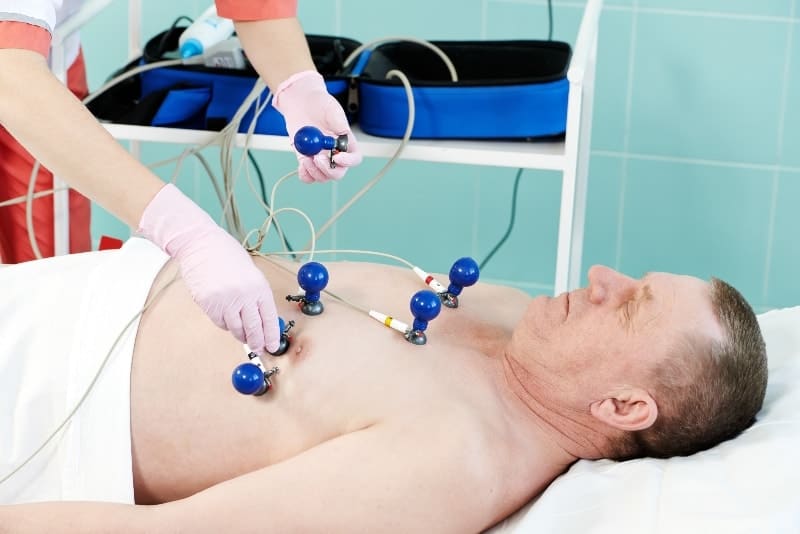
Sleep Apnea Treatment For Night Shift Workers
If you have a mild sleep apnea case, your doctor will likely recommend lifestyle changes such a losing weight, quit smoking and minimize any heavy drinking.
In case of nasal allergies, treatment options will be made available to you in conjunction with your doctor.
In case you have moderate to high apnea, or the above measures haven’t worked out, there are other treatments, devices and methods available such as;
Therapies
Continuous positive airway pressure (CPAP)
CPAP is the most common sleep apnea therapy. The mask keeps the airway open, and you can breathe well throughout the night without your throat closing up or snoring. The air pressure in CPAP is greater than the air pressure in our surrounding air hence keeping those airways open.
Some people find the device to be cumbersome, but according to users, you get used to it with a bit of adjustment.
Different companies are making this device, which means you can choose one that better serves your needs. If snoring and weight gain happen despite therapy, make sure you contact your doctor.
If you are wondering which CPAP mask is right for you, the video below will help you decide.
Alternative airway pressure devices
For people who find CPAP unbearable, other devices can perform a similar task.
For example, Auto-CPAP automatically adjusts the pressure while you’re sleeping. Also, Bilevel Positive Airway Pressure devices are available. It works by providing more pressure when you inhale and less exhale, making it a bit easier.
Oral appliances
Although CPAP is preferable to oral appliances, some people prefer them as they’re easier to use. Some oral devices are designed to bring your jaw forward, relieve snoring and mild obstructive sleep apnea.
These devices require a bit of trial and error until you find one that is a good match. After that, follow up with your dentist regularly for the first year. These follow-ups will help you ensure the device is doing its work and your symptoms have improved.
One particular product we’ve stumbled across is a mouth guard type sleeping appliance I guess you’d call it from Vital Sleep. The reviews are so good for this thing! In full transparency, neither Dan nor I have personally used this product before, but know of other night shift workers who have and swear by it. I’ll attach some video reviews below so you can see if this product is right for you and those you love.
Adaptive servo-ventilation (ASV)
ASV is a modern airflow device that works with a computer. The machine learns your breathing pattern and stores that information. When sleeping, this device normalizes your breathing patterns preventing pauses in between. As much as ASV seems to be the best option available, it is not a good choice if you have suffered heart failure and predominant central sleep apnea.
Treatment for pre-existing medical conditions
In some people, sleep apnea is a result of other conditions such as heart and neuromuscular disorders. Treating such disorders first might help ease the symptoms of sleep apnea.
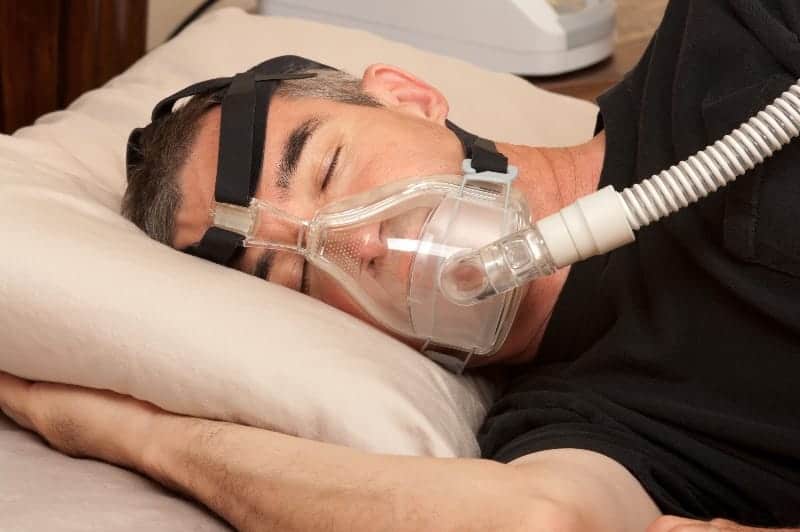
Usage of supplemental oxygen
Using supplemental oxygen when sleeping is another way that eases the symptoms of sleep apnea. There are many gadgets available today that help in delivering oxygen to your lungs.
Surgery
Surgery is the last resort when all other options haven’t worked. Patients are advised to partake in a three-month trial of other treatment therapies before resorting to surgery. Sometimes, even after surgery, one is advised to continue using CPAP to reduce sleep apnea severity.
It is the first option for people with jaw structure problems. There are different types of surgical options, which include;
- Uvulopalatopharyngoplasty (UPPP)
UPPP focuses on the back roof of your mouth. Excess tissue is removed or repositioned in the throat to create a wider airway. This procedure includes the removal of tonsils, trimming your uvula, and moving your soft palate muscles. UPPP doesn’t cure severe and moderate sleep apnea. Other methods that target the upper airway are necessary for success.
- Palatal implants
These implants are effective for people with snoring problems or mild sleep apnea. During the procedure, small fiber rods are inserted in your soft palates to stiffen them and prevent tissues from collapsing and causing an airway blockage.
- Tissue shrinkage
Radiofrequency ablation is for people with mild to severe sleep apnea. It shrinks and tightens muscles and tissues around the throat. You can also have tissue shrinkage on the tongue, soft palate, and tonsils.
Bariatric surgery
This surgery promotes weight loss and reduces symptoms of sleep apnea in people who are obese. Weight loss surgery is recommended chiefly because of the other risks that come with obesity. Various surgeries can be performed, like reducing the stomach size to prevent too much food intake.
Before resorting to bariatric surgery, you should explore other weight loss strategies like dieting and workouts. You will be required to use CPAP before and after this surgery.
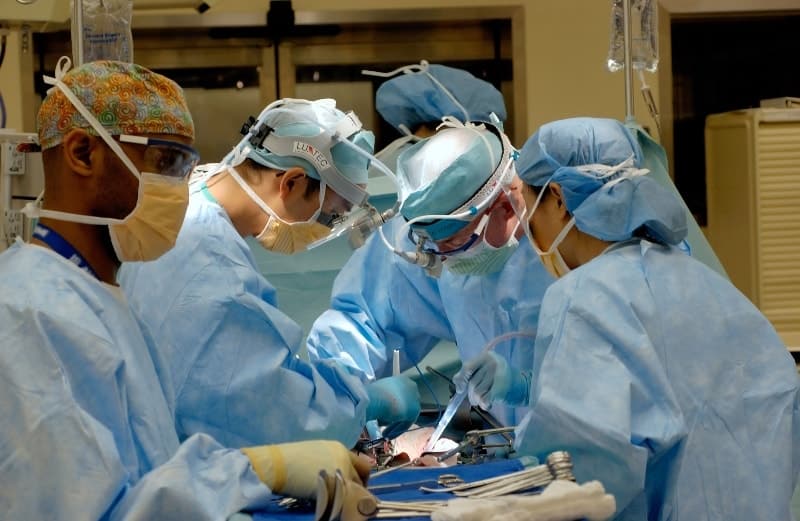
Septoplasty and Turbinate Reduction
Septoplasty opens and straightens your nasal passage to improve the flow of air. Turbinate reduction removes the curvature at the sides of the nose. Medication can also reduce turbinates size.
Tracheostomy
This surgery includes the placement of a tube in your windpipe. The tube can be removed during the day to allow everyday speech and breathing without throat blockage. This form of surgery is the most drastic and is the rarest.
Genioglossus Advancement
Some people have trouble when sleeping as the tongue falls back and blocks breathing in the throat. This surgery moves the tongue forward, opening up space at the back of the throat. The piece of bone attached to the tongue is cut and moved forward.
Nerve stimulation
During surgery, your doctor inserts a stimulator in the nerve that controls the tongue movement to keep the tongue in position. Since there is increased stimulation, the tongue stays in place, keeping the airway open.
If you're into podcast, you'll enjoy this listen from Sleep Hub about treating sleep apnea.
Can You Work Night Shift With Sleep Apnea?
In recent years there have been developments when it comes to the treatment of sleep apnea. Some people have ended up completely curing the disorder, while others have found a comfortable way to deal with it.
So yes. You can work nights with sleep apnea as long as you take control of your health, ask questions and seek help about your breathing and sleep habits.
In a study looking into thirty-one night-shift workers, the results concluded that;
...working at night led to more pauses in sleep, preventing one from reaching deep rest. The authors of this study cautioned untreated sleep apnea patients from working night shifts.
Before going back to night shift work, consult with your doctor to see if you're ready or not. It is advisable not to let sleep apnea go untreated as it may lead to other dire disorders.
Other Sleeping Conditions To Look Out For
- Shift Work Disorder
This disorder primarily affects people who work at night and sleep during the day. Since this goes against our circadian rhythms of resting at night and working throughout the day, a lot of imbalance occurs in the body. Most people with shift work disorder tend to feel very tired and struggle to sleep during the allocated sleeping hours. Read our entire post about Shift Work Sleep Disorder here.
- Insomnia
With insomnia, one has trouble falling asleep, staying asleep or both. This condition can be short term or long-term. Sometimes it comes and goes. When insomnia lasts three times a week for three months, it then is termed chronic insomnia.
You might also like; Why Listening to Music is Invaluable Shift Work Sleep Advice
- Narcolepsy
This neurological disorder makes you lose the ability to control when to wake up or sleep. It is characterized by excessive sleepiness during the day, no matter how much sleep you had the previous night. It sometimes leads to sleep attacks that happen at any time during any activity.
- Restless leg syndrome
RLS, also known as Willis-Ekbom disease, is characterized by a rapid movement of the limbs due to throbbing, itchiness, and other symptoms. These movements end up preventing sleep maintenance. There is no cure for this yet, but stretching before sleeping sometimes lessens the symptoms.
If you're standing on your feet all night, you (and your feet) will appreciate this post.
- Excessive sleepiness
This condition leads one to feel extremely dizzy and falling asleep. Many accidents and errors can occur due to this condition as the person can’t control when they fall asleep.
- Parasomnia
These are sleep interruptions caused by; sleepwalking, nightmares, night terrors, among others.
- REM sleep disorder
When having vivid dreams, people tend to act out, talk, punch or scream. These abnormal behaviors are known as REM sleep disorders. The brain tends to be active while it is supposed to be resting. Because of these behaviors in the brain, you tend not to get enough rest. Sometimes people wake up remembering all their actions in dreams and why they were doing it. (source)
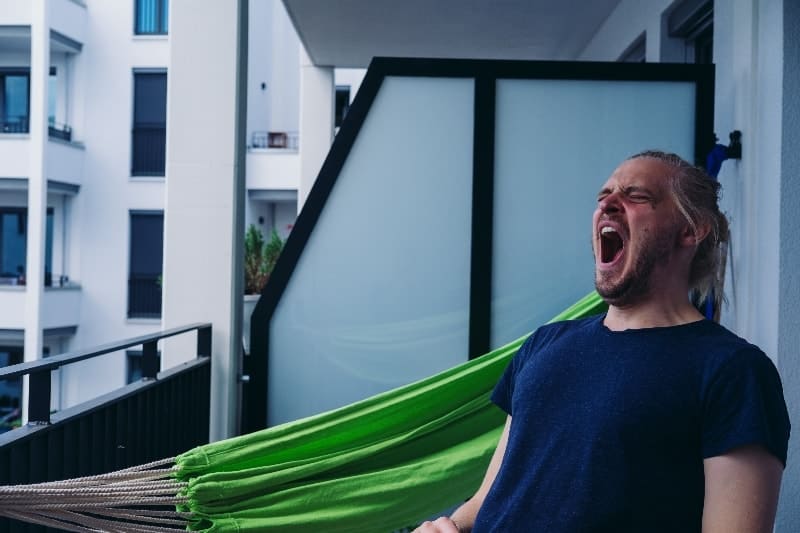
Employee Restrictions and Benefits of Having Sleep Apnea
After the amendment of The American Disabilities Act in 2008, people with sleep apnea won’t be discriminated against during employment. (source)
Employers can not deny people work due to a sleep apnea diagnosis, not unless they aren’t treating it.
There are reasonable accommodations in place for people with sleep apnea, for example, allowing a driver to install his CPAP machine in the truck he is driving.
Final Thoughts: Night Shift Work and Sleep Apnea
Sleep apnea is an actual condition that most people face due to industrialization and its demands for a twenty-four-hour work schedule. Night shift workers not only experience sleep apnea but are also at risk of developing shift work disorder. If you have no alternative but to work multiple times a week on night shifts, it is best to consult your doctor and see if you are developing these sleeping disorders.
Some other way of making sure you get enough sleep during the day after your night shift is to use heavy black-out curtains that cutoff light, a noise-canceling device too would be helpful, switch off your phone, and ask your family members to let you have uninterrupted sleep hours.
There are other more measures that could help. Just make sure your sleep is uninterrupted for the duration you need rest. Avoid coffee later on during your work shift, so it doesn’t interfere with your sleep after your shift is over.
Sleep apnea is a an acute sleep disorder that could lead to the development of other significant diseases. If diagnosed, find a way to get treatment as quickly as possible before it further interferes with your wellbeing.

Disclosure: This page may contain affiliate links, meaning we receive a commission if you decide to make a purchase through our links, but this is at no additional cost to you. Please read our disclosure and privacy statement for more info.
Recent Posts
An examination of the night shift professions, that while sometimes underappreciated, are necessary for civilization, in its current form, to exist. A city can be thought of as a machine. Each...
Culminated from an exhaustive yet well-funded journey into the night, this article will prepare you for life outside of work while being a denizen of the dark. During days off, night shift...
